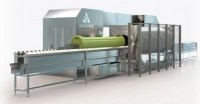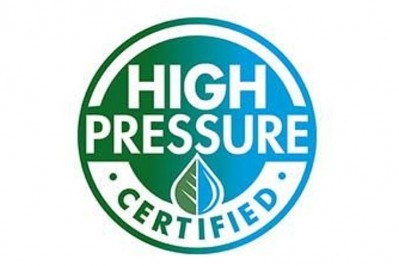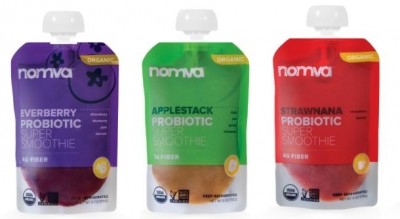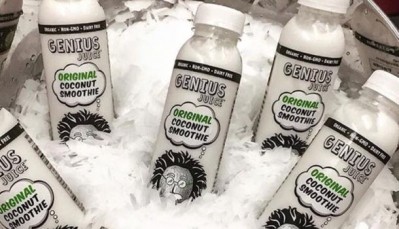Avure on new directions for HPP, and the real takeaways from those FDA warning letters…
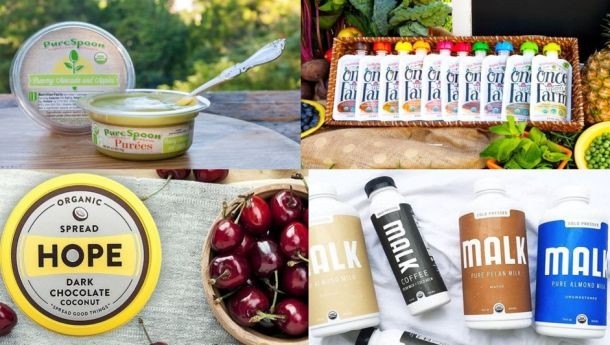
“Meat is still the biggest category, but we’re seeing a lot of growth in salad dressings, dips including hummus and guacamole, soups, fruit snacks [in pouches], petfood, babyfood, and beverages, including nut milks and smoothies as well as juices,” Avure marketing director Lisa Pitzer told FoodNavigator-USA.
"Costs have come down – the machines are becoming larger and therefore more efficient - but the tolling network is also growing like crazy all over the world, so it’s more accessible to companies that don’t have the volumes or the resources to buy their own machine. We also have smaller customers that have bought a machine to use on their own products and are then selling out the extra capacity to other people.
“We also have expandable HPP equipment, so you can upgrade your machine in the course of a long weekend and extend the capacity, so you don’t have to buy a new machine [as your volumes grow].”
Terminology: Cold pressed? Cold pressured? HPP-treated? Cold pasteurized?
While the technology is rapidly gaining traction, however, there is still no consensus on how best to talk about HPP with consumers, she said.
“Currently it’s [the terminology] all over the place. A lot of the meat companies using HPP will say things like ‘all-natural’ or ‘no preservatives’ but they won’t necessarily use the nomenclature ‘high pressure processed’ because they are worried that the word ‘processed’ has negative connotations for some consumers."
The phrase ‘cold pressed,’ meanwhile, often serves as a proxy for HPP on juice labels in that any cold pressed (ie. freshly squeezed) juice brands with distribution beyond a very localized network will likely be using HPP in order to ensure a shelf-life long enough to go into retail distribution, she said.
‘Cold pressured,’ a term that is being heavily promoted by Avure’s rival Hiperbaric via the Cold Pressure Verified Program is gaining some traction in the beverages market, with support from brands such as Suja Juice, but no one phrase has yet come to dominate, she said.
Indeed, how to talk about HPP was a hot topic at the BevNET Live conference last year, when Tio Gazpacho founder Austin Allan observed that “HPP sounds like something from outer space,” and noted that the term ‘cold pasteurized’ resonated better with some consumers, although other stakeholders – notably RAU co-founder Daren Myers – said pasteurization involved heat, so could be misleading, and said ‘pascalization’ was a more accurate term.
According to Pitzer: “There are still a lot of consumers that have no idea what HPP is, but they do look for clean labels and that is what HPP can deliver.”
High pressure processing (HPP) - whereby foods or beverages (in their final packaging) are put into a high-pressure chamber that is flooded with cold water and pressurized (thus the ‘cold-pressured’ moniker) in order to kill pathogens without heat – is more expensive that thermal pasteurization.
However, it has several advantages in that it enables products to retain the texture, nutrition and taste of homemade food, with no preservatives or added flavors (ie. a clean label), and a shelf-life long enough to secure national distribution, says leading HPP equipment provider Avure.
HPP is not suitable for carbonated soft drinks, but works well in most other beverage applications, provided they are packaged in plastic (as opposed to glass bottles or cans) says Avure, which claims to offer "the industry's largest diameter and fastest-filling pressure vessels, which pump pure water and deliver more product with every cycle."
The technology also works well in meat & poultry, seafood, wet salads & dips, guacamole, hummus, fruits & veggies, babyfood, petfood, ready to eat meals, dairy products, grains and nutraceuticals, claims Avure, which works with manufacturers at its R&D center in Erlanger, KY, to test new applications.
FDA warning letters
So how does Avure respond to questions over whether HPP is an appropriate means of controlling c.botulinum (spore-forming bacteria that can produce harmful toxins) in high pH/low acid beverages such as coconut water in light of a series of FDA warning letters send to companies last year?
In a March 2015 letter to Stewart Brothers, for example, the FDA stated that HPP is “not effective to control C. botulinum spores in low acid juices (pH >4.6),” such as its Columbia Gorge veggie/juice blends, while in a November 2015 letter to coconut water brand Harmless Harvest, it said: “Spores of Clostridium botulinum have demonstrated the ability to germinate and grow in low acid juices (such as coconut juice), producing toxin.”
As a result, some brands in the coconut water and nut milk space have move away from HPP over the past 12 months, which is frustrating, said Avure SVP microbiology and technology Dr. Errol Raghubeer, because Avure has commissioned tests from the Institute for Food Safety and Health (IFSH) in Illinois which it claims show that spores of strains of C. botulinum are unable germinate, grow and produce toxin in fresh coconut water.
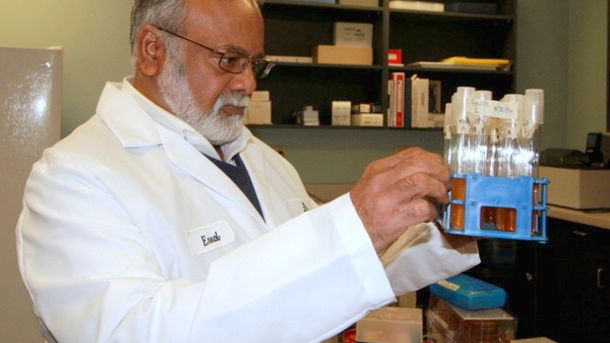
None of the coconut water samples showed toxin production
He explained: “Although it is well known that HPP does not inactivate C. botulinum spores, this study investigated the potential for spores to germinate, grow and produce toxin by proteolytic and non-proteolytic C. botulinum in fresh coconut water (filtered and unfiltered) treated with HPP for 3 min at 86,000 psi (593 MPa) and stored at 4°C and 10°C for 45 days.
“Although there was an increase in the total anaerobic count during the 45 days of storage, particularly in samples stored at 10°C, none of these samples showed toxin production by DIG-ELISA and the increase in anaerobic counts are most likely the growth of homofermentative strains of lactic acid bacteria which is not uncommon in most HPP products,” added Dr Raghubeer, who said he had sent his findings to the FDA but had not yet heard back.
“The results indicate that spores of strains of C. botulinum are unable to germinate, grow and produce toxin in fresh coconut water."
‘Conclusive evidence’ that coconut water, regardless of HPP, does not support the germination, growth and toxin production of strains of C. botulinum…
He added: “This is conclusive evidence that coconut water, regardless of HPP or not, does not support the germination, growth and toxin production of strains of C. botulinum at 4°C and 10°C refrigerated storage.
“While we agree that there is the potential for C. botulinum contamination in coconut water, this comprehensive study proves to us that HPP, combined with potential natural elements found in coconut water, is an effective food safety measure.
“It is likely that [a] naturally occurring inhibitory compound or compounds in coconut water, make C. botulinum unable to germinate, grow or produce toxin, or that coconut water lacks certain key ingredients to promote growth and toxin production of C. botulinum."
He also noted that “HPP of coconut water is a viable process for the inactivation of other vegetative pathogens of concern such as L. monocytogenes, Salmonella and E. coli.”
As for low acid/more vegetable-based juices, he said, companies typically modified the pH (to increase the acidity), for example with the addition of high acid fruit juices, to address safety concerns.
Two brands using HPP - MALK and PureSpoon - will be speaking at Food Vision USA in November. To find out more, click HERE.
Survey
What's the best way to talk about HPP on a food label?
High pressure processed
26%Cold pressed
15%Cold pressured
20%Cold pasteurized
15%Pascalization
6%High pressure pasteurized
3%Non thermal pasteurization
9%None of the above
6%
